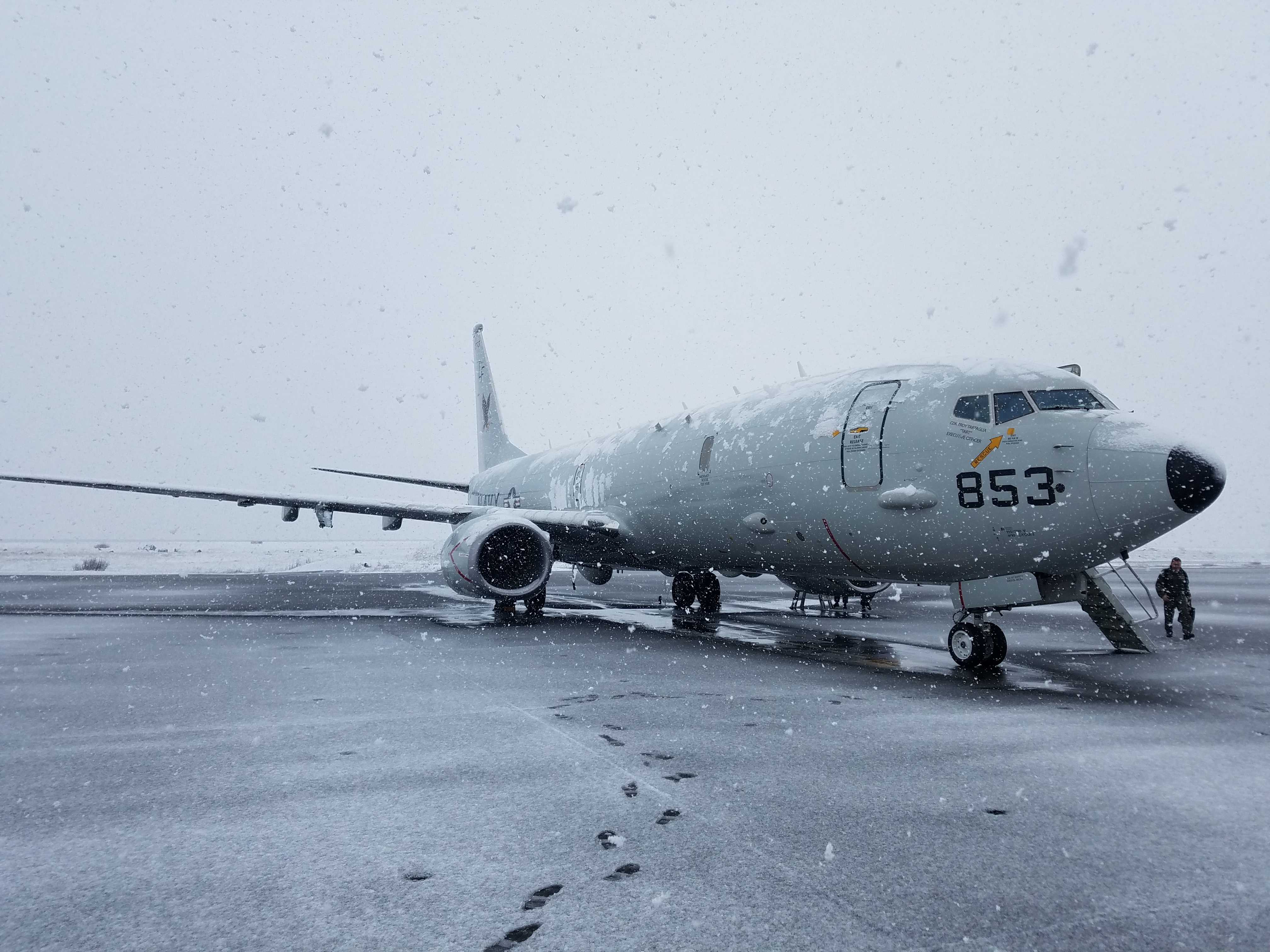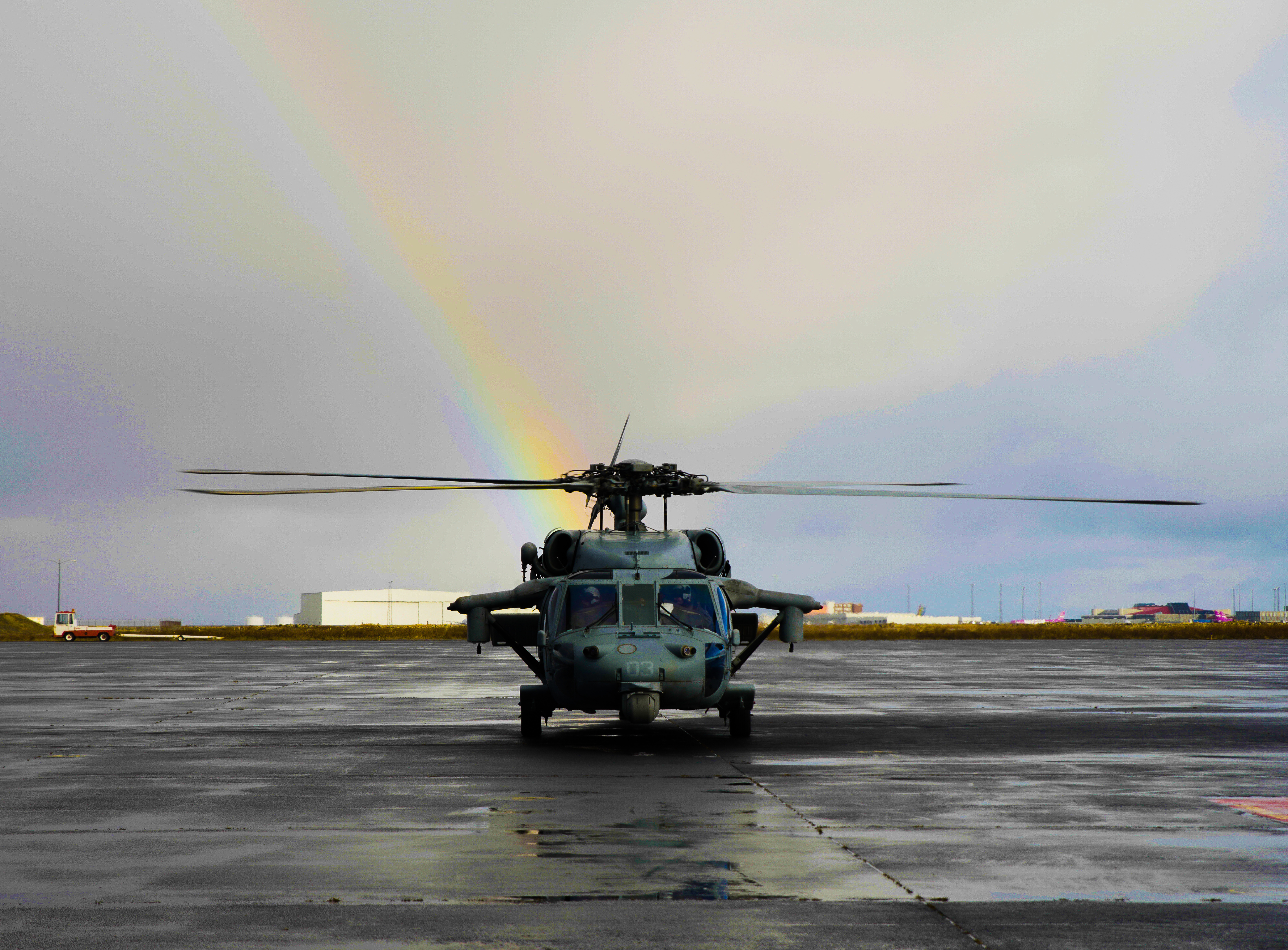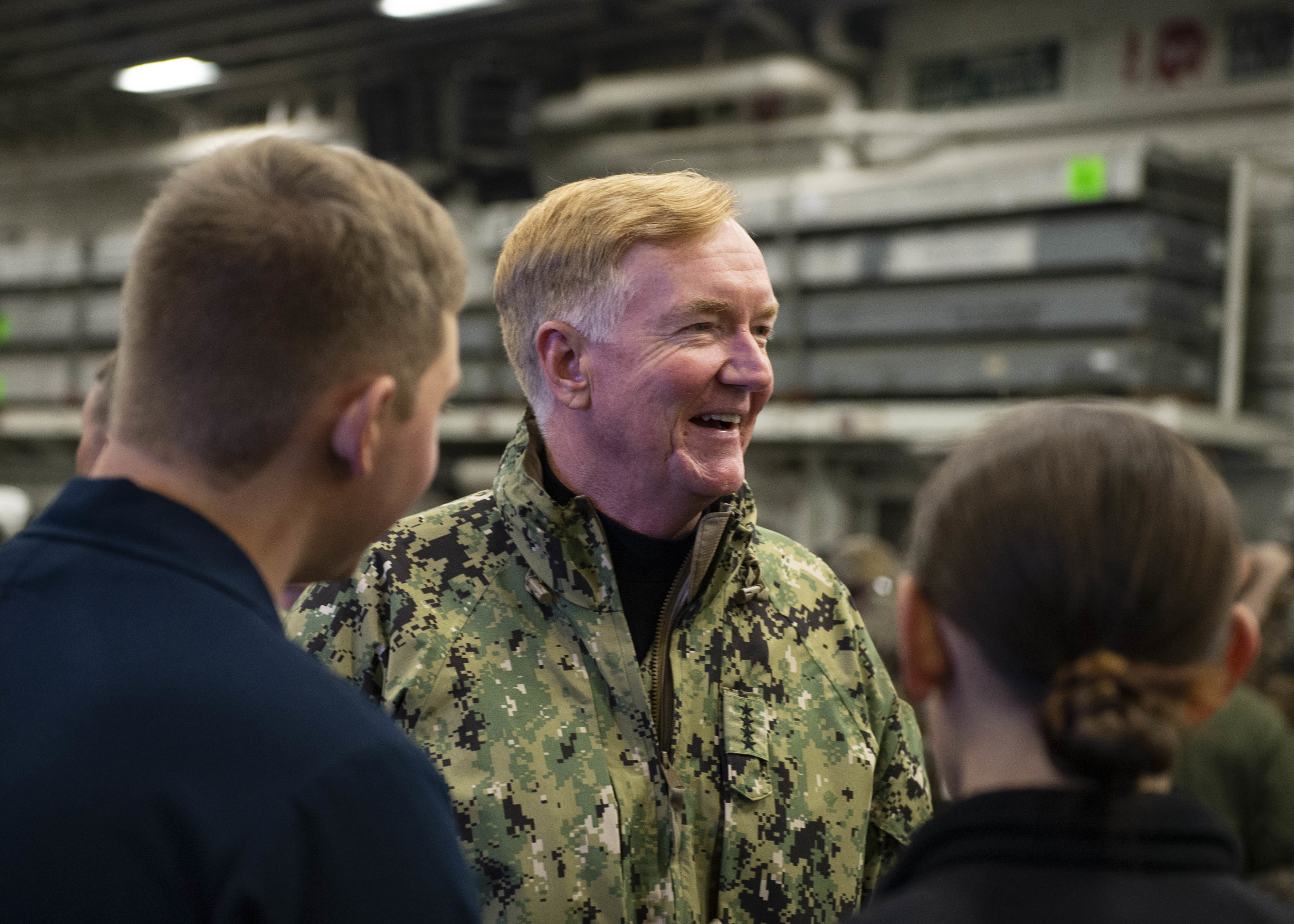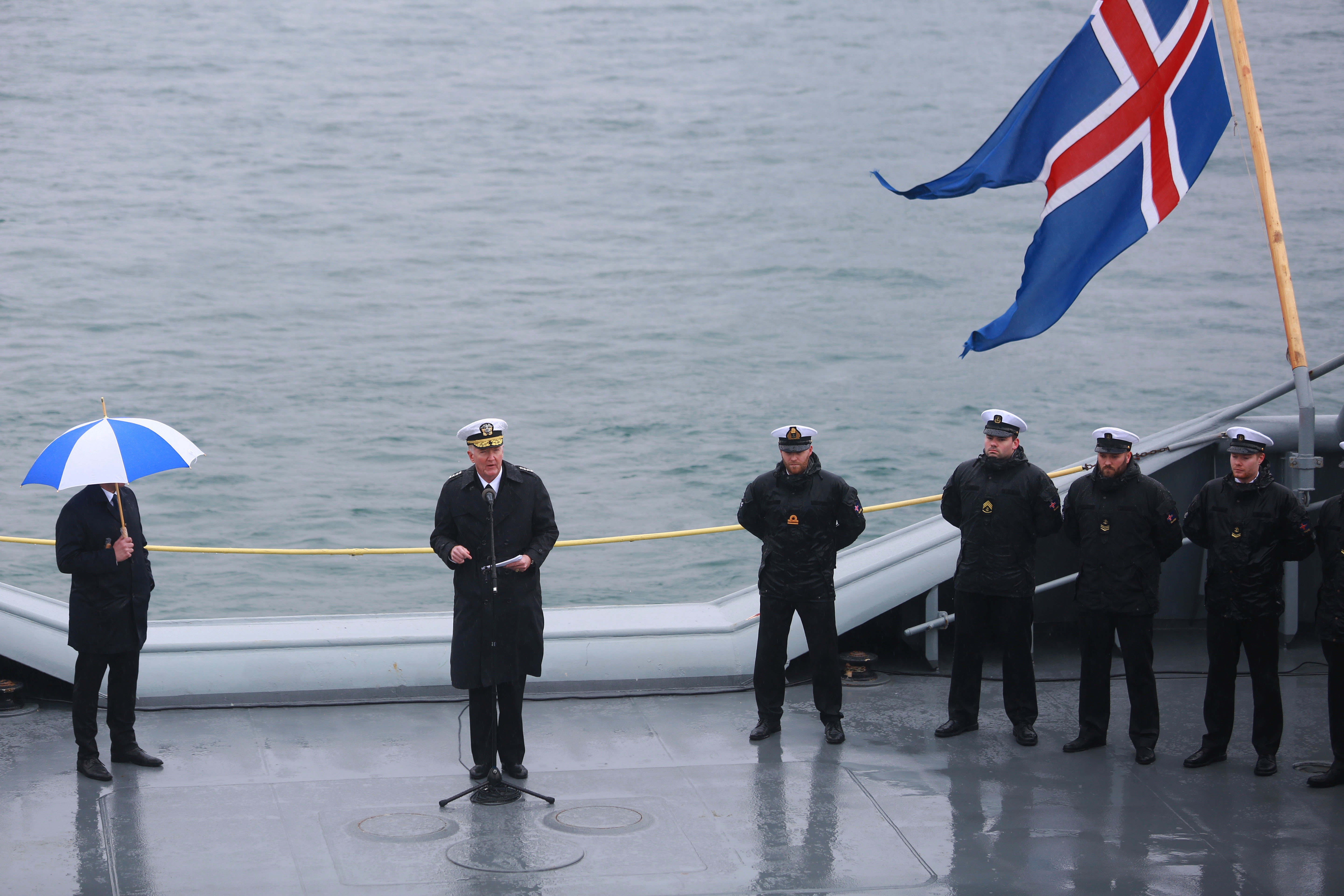
REYKJAVIK, ICELAND – Iceland may not have a navy, but the strategically located small nation is punching above its weight in terms of sea control and maritime safety in the increasingly important North Atlantic region, the head of U.S. naval forces in Europe said.
Right in the heart of the Greenland-Iceland-United Kingdom gap, Iceland is at the forefront of a boom in travel to high-north destinations, a growth in commercial shipping as North Atlantic and Arctic sea lanes open up, and an increase in Russian submarine activity.
In a nod to the importance of the country, Adm. James Foggo, the head of U.S. naval forces in Europe and Africa and the commander of NATO’s Allied Joint Force Command Naples, stopped by Iceland for the kickoff of the Trident Juncture 2018 exercise.
“Iceland is at a strategic crossroad in the GIUK gap, and that’s something that I emphasize to my Icelandic partners and friends and allies,” he told USNI News on Oct. 16 from the bridge of Icelandic Coast Guard offshore patrol vessel ICGV Thor.
“They’re punching above their weight class: they’re doing integrated air defense, air policing, and they’re providing us with the opportunity to use facilities at Keflavik (Air Base) to launch P-8 aircraft and conduct surveillance and reconnaissance and also theater [anti-submarine warfare] that’s part and parcel of the Trident Juncture plan.”
Some of this contribution to defense comes from Iceland’s civilian law enforcement Coast Guard, which is about 220-people strong and handles everything from fisheries enforcement to search and rescue to air defense. The Coast Guard runs the NATO Iceland Air Defence System, which feeds into the NATO Integrated Air and Missile Defence System, as well as the NATO Control and Reporting Centre that informs the Combined Air Operations Centre.

Other contribution comes in the form of letting foreign navies operate from the Keflavik Air Base. The U.S. Navy took control of an American air station here in 1961 – after the U.S. Air Force opened it in 1951 – and had operated P-3 Orion aircraft from here until 2006, when the American base was shuttered. Though the U.S. will not reopen a permanent base in Keflavik, detachments of P-8A Poseidon maritime patrol aircraft homeported in Florida and in Italy have rotated through Keflavik over the past couple of years. The U.S. Navy and Air Force will spend a combined $35 million or so on upgrades to the Icelandic facility to support these newer airplanes. The United Kingdom and Norway are both in the midst of buying P-8s, and Foggo said he hoped they too could operate from Keflavik one day.
Foggo, speaking later in the day at a Vardberg Association event at the Nordic House in Reykjavik, said that Russian submarines could and have already pushed farther into the Atlantic than they had in recent history. While he said he didn’t think the submarines would attack a NATO member, he said he wanted to be able to track them all the same.
With the Russian subs now carrying the Kalibr over-the-horizon missile with a range that threatens every European capital, “we need to be cognizant of where the launchers are for those weapons systems, we need to know where they are at all times. It gives me a good sense of security to know. Do I think they’ll be used against NATO allies? No, I don’t, but I want to know where they are, that’s part of my job as a military officer, whether they’re in the maritime domain, the land domain or the air domain.”
Additionally, Foggo cited the presence of undersea cables in the GIUK gap, which carries most of the information between North America and Europe.
“We need to know that they’re safe. We need to be able to monitor them. We need to ensure that nobody else does anything untoward to those cables. I’ll leave it at that,” he said.

To Iceland, according to Minister of Foreign Affairs Gudlaugur Thor Thordarson, the island without a military does not necessarily feel threatened by changes in the security environment, but rather it takes seriously its obligation to NATO allies and to the safety of travelers passing through the region.
Asked if the increase in Russian submarine activity in the North Atlantic made Iceland nervous, Thordarson told USNI News while aboard Thor that the subs didn’t directly threaten Iceland but rather “it’s just a question of the importance of common defense and security structure inside NATO. It’s important we look at every aspect; we see a lot of new challenges when it comes to security and defense – some traditional, some like cyber warfare, terrorism and other things – and this is something we need to beware of and prepare (for). And that’s the reason Trident Juncture is an important exercise.”
Equally on his mind, he said, is providing a robust search and rescue capability in the GIUK Gap for NATO partners and for commercial traffic. Thordarson likened the opening of Arctic waterways to the opening of the Panama Canal or the Suez Canal and said it has the potential to shave 40 percent of the distance off an Asia-to-North-America merchant ship transit.

With both the military threat and the expected boost in commercial traffic in mind, the Icelandic Coast Guard is already modernizing its force and may have more growth in the coming years. The service’s flagship, Thor, is just seven years old. The Coast Guard is currently buying new and bigger helicopters to replace its legacy fleet and provide greater capability, and after the aviation recapitalization Iceland may consider growing its ship fleet size beyond the four vessels it currently has.
Thordarson told USNI News, “Iceland’s in a different position than military nations in NATO in that we do not have a military, but that doesn’t mean we do not participate in NATO.” Referencing an ongoing push for NATO allies to increase their defense spending to 2 percent of their gross domestic product, the minister said, “it’s different here in Iceland, but nevertheless we have been increasing our defense spending by 20 to 30 percent since 2014 and we will keep on doing that in our long-term plans.”
During the visit, Thordarson and Foggo paid tribute to Iceland’s history of supporting allies in battle even without a military force of its own. The two conducted a Second Battle of the Atlantic commemoration, honoring the 110,000 lives lost during World War II in the submarine war in the Northern Atlantic, and specifically the more than 200 Icelanders who died.
“Seventy-nine years ago began the longest continuous battle of the Second World War, the Battle of the Atlantic. It was marked by the sinking of the Athenia west of Ireland less than 12 hours after the outbreak of war on September 3rd, 1939. The battle ran for 68 months, finally ending with (German) Fleet Admiral Donitz’s signal of May 4th, 1945, ordering his U-boats to cease all hostilities and return to base. Four days later Germany offered her unconditional surrender,” Foggo said in a ceremony aboard Thor.
“The beautiful country of Iceland and her generous people made a huge contribution. Officially neutral, the Icelanders allowed British, American, and Canadian servicemen and women to be stationed on their shores and to have ships, submarines and aircraft operate from Icelandic airfields and Icelandic ports. Keflavik and Hvalfjordur became important bases for anti-submarine warfare. Allied aircraft based in Iceland were indispensable to the campaign to protect the vital North Atlantic sea lines of communication – they scoured the seas, stalking U-boats, and engaged with deadly efficiency. Ultimately, about half of all successful U-boat kills were carried out by shore-based aircraft, many of those from right here in Iceland.”





